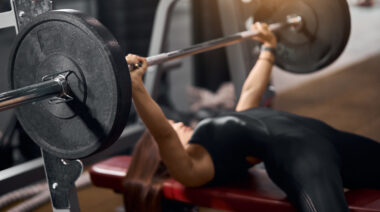Look, I’ll be honest with you: all that time you spend stretching and limbering up is just a drop in the bucket. And it’s really not that much fun, is it? If it’s not fun and not effective, there’s surely a better alternative, right? I want to introduce you to a new way to think about your mobility and flexibility, one that takes into account the other 23 hours of the day.
You, In Context
Ok, so you’re tight, stiff, and achy. How did you get here in the first place?
We’ve talked before about the SAID principle. It’s the idea that your body is constantly changing and adapting in very specific ways based on what it’s coming up against.
- You fatigue muscles and stimulate tissue adaptation.
- You eat plenty of healthy fats and trigger beneficial hormonal responses.
- You meditate and create new neural pathways.
The things you do with your body shape it on a cellular level. But the SAID principle extends beyond that. It takes into account the big picture context of your life, including your habitat and the people you associate with. Remember: those things affect your behavior too.
So if you want to get your body feeling looser, you have to examine this big picture. I think of this context as a “somatic ecology.” Our bodies and minds are in an ever-changing, adaptive relationship with the world around us. And within that dynamic we have three key areas we can explore: the “eco,” the “neuro,” and the “physio.” Each offers us a way to improve our mobility and sense of ease.
The Eco
Take a look at your current environment. Do you spend much time outside? Are you trapped in a chair for the bulk of your waking hours? Do you encounter much variety in the surfaces you walk on?
These things matter.
When we put our bodies in rigid, unchanging environments, they become rigid and unchanging. One of the easiest way to bring more mobility to your body is to intentionally change up your environment:
- Find more excuses to spend time on the floor (even just sitting on the floor to check email).
- Make time to get your body outside.
- Explore how to make your habitat a little less comfortable (excessive comfort got us here in the first place).
Doing so will gradually encourage new behaviors and force adaptations throughout your body.
The Neuro
It’s undeniable that a big part of your tension stems from the nervous system. It puts the brakes on movements that it views as dangerous. The nervous system is looking out for us, and it doesn’t care whether or not we can do the splits. It cares about survival.
The first step to take here is intentionally downshifting. Stress will sabotage your mobility faster than anything else. Relax, dude.
- Take time each day to breathe (think of it as a soft reset).
- Tune in to what sensations you notice in your body.
- Be present with your movements (it makes a bigger difference than you think).
The Physio
Here’s the heart of the issue. At the end of the day, stretching is just a compensation for a lack of movement. Move! You don’t need to overthink this one. Your body is begging for it. It needs movement as much as food and oxygen. Little bits of movement throughout the day make a much bigger impact than an hour of exercise ever could.
Your breath is the key to everything else:






